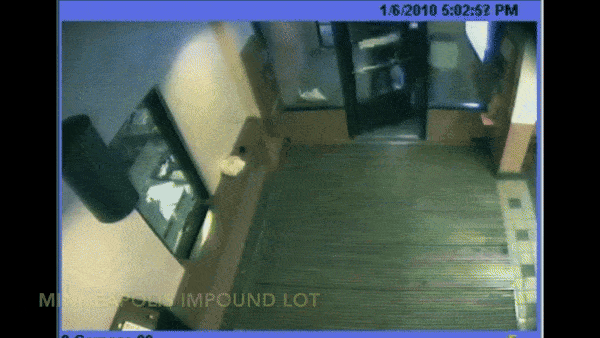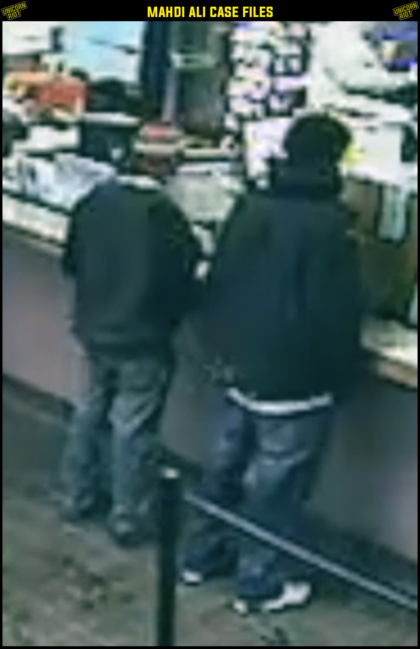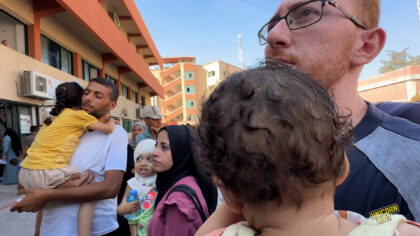Interview: Breaking Down the Mahdi Ali Case
Minneapolis, MN — The brutal 2010 triple murders at the Seward Market shocked the community, and police concluded the killer was fifteen-year-old Mahdi Ali. However, a new Unicorn Riot investigation raises 27 different issues with that investigation and the murder trial. It’s a huge amount of information, so we circled back with our contributor to break down the major elements people should know about this contentious case.
An accomplice at the robbery, Ahmed Shire Ali, served 12 years in prison after testifying against Mahdi. Ahmed’s cousin, Abdisalan Ali, was cleared by police and also also testified against Mahdi. However, a closer look at the evidence suggests that the authorities didn’t necessarily convey the whole story in the trial. The transcript of our 15-minute discussion follows.
Unicorn Riot: Marjaan Sirdar is a freelance investigative journalist and a contributor to Unicorn Riot. He authored the 12 part series, Jim Crow in the North Star City, about how Target Corporation, Minneapolis and Hennepin County created a domestic spy program that rolled back civil rights on its Black population. The last investigation in this series covers the Seward Market triple murders in 2010, and the conviction of 15-year-old Mahdi Ali.
UR: Marjaan’s here to talk with us about this deep dive report. So how did you learn about this story and what made you decide to write about it?
Marjaan Sirdar: I was doing a deep dive investigation into Target’s public-private surveillance partnership and its cozy relationship with the Minneapolis Police Department and how, together with the Hennepin County Attorney’s Office, they were cracking down on low level so-called livability crimes. And what I found is they were almost exclusively arresting and prosecuting Black people, mostly Black youths who were disproportionately homeless, for things such as jaywalking, spitting on the ground and loitering.
It very much felt like a throwback to Jim Crow and the Black Codes, which is where these ordinances originated, all to put newly free Black people in bondage. It was during this investigation when I learned about Mahdi’s story and Target’s involvement in his conviction. Although he maintains his innocence, considering the dragnet, racialized surveillance, and systematic arrest of Black youth in downtown Minneapolis, spearheaded by Target, I thought I ought to look into his case. And what I found was jarring.
UR: So your report covers the more than two dozen glaring issues that you found with the official investigation and the murder trial. And that report is up on our website on Unicorn Riot. Now you’re here to break down the top issues within that. So the first one off was that Mahdi had an alibi and what can you tell us about this?
MS: So I spoke to Mahdi’s friend AJ, who he asked me to, not reveal his real name. So we call him AJ in our report, and AJ said he was Mahdi’s alibi the night of the murder. He testified at Mahdi’s trial that they were together with another friend at the time of the killings.
So Mahdi, who was driving AJ’s car that day, the day of the killings, picked up AJ from work when the crimes occurred, according to AJ. And according to Mahdi. And AJ’s employer, the University Fairview Hospital verified to police that AJ clocked out of work about ten minutes before the murders happened. AJ and Mahdi both are adamant that the police were lying. And AJ, 14 years later, is adamant that his friend is innocent.
UR: Surveillance video could have confirmed Mahdi’s alibi but was never secured. What do we know about this?
MS: So there were surveillance cameras from the University Fairview Hospital where AJ worked that captured Maddie picking him up that night. Yet detectives suspiciously failed to secure copies of the video of the surveillance video, and instead, they only requested still images of Maddie picking up AJ. However, detectives argued that the pickup time was at 8:26 p.m. rather than 7:45 p.m. like the teens claimed, arguing that the additional 45 minutes gave Mahdi enough time to commit the killings and still pick up AJ from work.
MS: But again, AJ and Mahdi are steadfast that the police lied in court and that they lied on the police report. Mahdi said his attorney never even received a copy of the hospital surveillance footage either, which he believes could have exonerated him.
UR: So you’re saying that there’s a lack of credible evidence? How so?
MS: So the blood DNA evidence that police allegedly found on Mahdi’s jeans that came from one of the victims, from the triple homicide. It was contaminated with the DNA of three other people, including a state investigator. So Mahdi believes that the blood drop was planted by police, considering it wasn’t even discovered until three months after police seized the jeans.
MPD didn’t find any other clothes in Mahdi’s apartment linked to the crime. There was no DNA or other evidence from the crime scene found inside AJ’s car that Mahdi was driving that night.

UR: Now, regarding the surveillance videos at the Seward Market, it appears Mahdi was too short and didn’t match the description. What’s going on there?
MS: The accomplice depicted in the surveillance video from the Seward Market, Ahmed Ali, who was convicted of aggravated robbery, three counts of aggravated robbery. It was verified by MPD in their police report that he was six feet one inches tall at the time of the murders. The shooter depicted in the same video appears to be close in height as the accomplice, yet Mahdi was listed on the police report as five feet eight inches tall, nearly a half foot shorter than both Ahmed Ali and his cousin Abdisalan Ali, who Mahdi believes committed the crimes, together and blamed him. Despite the state arguing that the shooter appears to be much shorter than the person who goes to the back of the store, that was never credibly established in court. In fact, in one surveillance video from the day of the killings, when Mahdi, Ahmed and his cousin Abdisalan visited the Minneapolis impound lot there is a visibly drastic height difference between Mahdi and Ahmed. However, in two other videos, including the Seward Market surveillance video and the Dahabshiil check cashing store where the two suspects stopped about an hour before the murders, there appears to be no discernible height difference between the two suspects.
MS: Abdisalan testified in court that he was a half inch shorter than Ahmed, which seems closer to the height discrepancy between the accomplice and the shooter in the Seward Market surveillance videos.

UR: Target Corporation personnel worked on this investigation and testified at the murder trial. So was there a case here of a multinational corporation tipping the scales of justice?
MS: It certainly appeared that way. For years, Target Corporation has funded the Hennepin County Attorney’s Office and the Minneapolis Police Department, and they have regularly assisted law enforcement in their investigations, which still goes on to this day. At Mahdi’s trial, two Target forensics investigators testified against Mahdi on behalf of the state, using questionable science to argue for the state that the shooter was shorter than the accomplice and the jeans worn by the killer on the surveillance video appeared to be similar to the jeans police found at Mahdi’s home.
Now, when they were pressed by Mahdi’s attorney under cross-examination, the two Target employees admitted that they could not exclude Maddie nor Abdisalan as suspects, although there was nearly a half-foot height difference between the two, and they could not positively identify Mahdi’s jeans as the ones in the video worn by the killer.
UR: Your report showed the two original suspects blamed Mahdi for the killings. So what did you find out about the motivations behind that?
MS: So Ahmed Ali and Abdisalan Ali were named as the original suspects in a Crime Stoppers tip that was sent to the police the very next day after the killings. And Abdisalan’s classmate told the police that he confessed at school to killing three people the day after the murders. Ahmed was positively identified by police and surveillance videos from the Seward Market and from another stop they had made earlier that day, and Ahmed was initially charged with six counts of murder, and he had a life sentence hanging over his head before he was coerced by MPD and prosecutors, who offered him a deal only if he testified against Mahdi.
Ahmed accepted the deal and pled guilty to three counts of attempted aggravated robbery instead, and received a substantially reduced sentence of just 12 to 18 years. Abdisalan, whom the overwhelming evidence pointed to as being the likely killer, testified against Mahdi in what has been speculated as a secret deal considering he was never charged with the crime.
UR: There is an interesting element of informants in this case — potentially unreliable testimonies from those informants. This has been a pattern historically with the Minneapolis police and the Hennepin County Attorney’s Office. We’ve found that in Unicorn Riot’s past reporting. Tell us what you found in this case.
MS: Judge [Peter] Cahill, who presided over Mahdi’s murder trial, allowed prosecutors to use a jailhouse snitch and a paid police informant to testify against Mahdi, both claiming he confessed to the crimes. Leandro Garcia testified under oath that while he was locked up with Mahdi in the Carver County Jail, Mahdi confessed to the killings while they were watching the true crime show “Another 48 Hours.”
Mohamud Galony, who was a [confidential] reliable informant for Minneapolis police or in other words, a paid snitch, also took the witness stand against Mahdi. He claimed that Mahdi had told him two weeks before the killings that he was planning to rob the Seward Market, but he admitted at trial that he didn’t even know Mahdi’s name until after his arrest.
Galony’s testimony was so full of inconsistencies that the prosecutor had to show him a transcript of his interview with the police, just to refresh his memory. Mahdi, however, maintains his innocence, and he told me that both of the informants lied in court.
UR: One of the striking elements in this case are the blacked out sections of police interviews with Abdisalan. Can you talk about how they investigated Ahmed’s cousin?
MS: According to the police report, detectives cleared Abdisalan’s alibi, which was full of inconsistencies, without ever once asking him if he killed the three people inside the market. Detectives told Abdisalan they didn’t have any evidence linking him to the killings, and just wanted his cooperation in charging Mahdi for the murders. Though, according to the same classmate he confessed the killings to, Abdisalan was involved in another killing that took place in Apple Valley, Minnesota, less than five months before the supermarket murders occurred.
UR: The killer was wearing Abdisalan’s jacket in the surveillance videos. That seems like a major deal. Why did this get brushed aside in the case?
MS: When Abdisalan took the witness stand at Mahdi’s trial, the prosecuting attorney, Robert Streitz, presented him an image of the killer from the surveillance video. Abdisalan identified the jacket the killer was wearing as his. Although he said under oath, I can’t recognize who’s wearing it, but I gave the jacket to Mahdi. This contradicts detectives’ statements during Abdisalan’s interview that they didn’t have any evidence linking him to the crime scene.
UR: Ahmed testified Mahdi was the killer, but years later, he changed his story. Tell us about that.
MS: In 2021, just a year before he was released from prison with good time, Ahmed recanted to a Fox9 news reporter and said he lied about Mahdi’s involvement and he is really innocent.
Media Clip: I feel guilty about that [testifying] because I was protecting somebody else. And he ended up taking the fall for something he didn’t end up doing.
MS: Now, the problem is, once Ahmed was released from prison, he never followed up to sign an affidavit which would have made his admission legally binding by law.
In fact, he disappeared. He left town, and community members believe that he moved to Dallas, Texas with his family.
UR: Okay, so there’s a lot of other issues with this case, and they’re all documented thoroughly in the piece on Unicorn Riot’s website.
It’s called Target, ‘Junk Science’ and Unreliable Testimonies: The Contentious Conviction of 15-Year-Old Mahdi Ali. And there you can read all 27 issues found with the initial investigation and the murder trial.
MS: Viewers can sign a petition on Change.org that was created by Mahdi Ali’s family, pushing for a new trial with the hopes to exonerate him. And we’ll have a link to that petition in this story, as well as the extensive report I did recently that’s published on Unicorn Riot’s website.
UR: Great. Thank you very much for talking with us. Marjaan Sirdar, our contributor, who spent two years tracking down the elements of this story. And again, you can read about it on our website.
MS: Thank you.
Cover image by Niko Georgiades. Media assets by Marjaan Sirdar and Niko Georgiades.
Follow us on X (aka Twitter), Facebook, YouTube, Vimeo, Instagram, Mastodon, Threads, BlueSky and Patreon.
Please consider a tax-deductible donation to help sustain our horizontally-organized, non-profit media organization:



